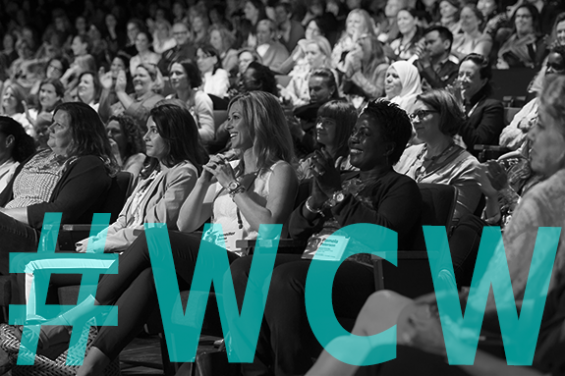
The mystery of left-handedness: The making of a TED-Ed Lesson
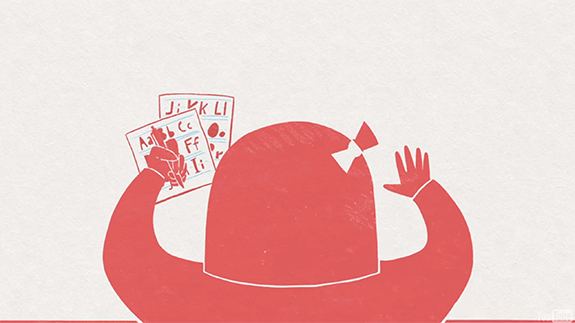
Today, about one-tenth of the world’s population is left-handed — and archaeological evidence concludes that it’s been this way for the last 500,000 years. But why do such a small percentage of people carry this trait, and what does it mean about them that they do? These were the questions that inspired TED-Ed Educator Danny Abrams and TED-Ed Animator Lisa LaBracio (ironically both righties) to take a deep dive into the subject of southpaws for one of our most popular TED-Ed Lessons this year, “Why are some people left-handed?.“ We caught up with the duo to talk about their process taking this animation from script to screen.
What made you interested in the subject of handedness?
Danny Abrams: I’m not left-handed, but my father is. I often wondered about handedness growing up, especially when my dad told stories about attempted “conversion” to right-handedness. A few years ago, I saw some statistics showing the disproportionate success of lefties in sports, and it made me start thinking about whether a mathematical model could explain those numbers. From there I went on to wonder about the general history of left-handedness and how/why it evolved in the first place.
Lisa LaBracio: Well, similarly, my sister is a lefty & I’m a righty, and growing up, I observed lots of little quirks that lefties had to overcome on daily basis. She had her own scissors; I couldn’t use her softball glove; we had to arrange ourselves in the diner booths so that our elbows wouldn’t knock into one another. My sister has definitely gone through life telling me that she was in her ‘right mind,’ while I most certainly was not, so secretly I wanted to find out if there was any proof to the contrary. But in reality, I was mostly just curious! Why are some people left-handed?
However, the more I researched, the more muddled my understanding became. I came across several theories including neurological, genetic, social, and biological explanations . But above all, I was most fascinated to find that throughout history, despite prejudices against ‘southpaws,’ the percentage of left-handers in the population has consistently remained at 10% – which indicates that there must be some advantages to being left-handed.
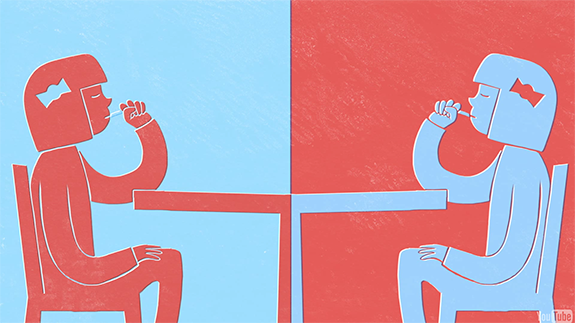
What was the most interesting thing you learned while making the lesson?
LL: I was not at all familiar with frequency-dependent selection, and it definitely rounds out my understanding of human beings as a unique species that relies on both competition and cooperation to survive. I find it so intriguing that there are more lefties in hunter-gatherer societies, and that cooperative mammals tend to be evenly split between lefties and righties. Finally, I’m so grateful that there is no concrete proof that my sister is in her ‘right mind,’ but I remain confident that she would still destroy me on the softball field.
DA: I really got a chance to see my research with fresh eyes. After studying a topic for long enough, you start to lose perspective and forget what was most interesting or surprising. Interacting with TED-Ed while working on the script was a great way for me to get excited again and figure out how best to communicate things.
Danny, had you ever worked with an animator before?
DA: No, this was my first time working with an animator, and I was really impressed by Lisa’s work. She sent me early storyboards and then periodically sent me updates with links to the in-progress animation. I felt like her ideas were key to the lesson—I had a few vague pictures in my head when we started, but she came up with a lot of better visuals that I never would have thought of. She also asked a lot of questions that led to a better script and a better lesson.
The most exciting moment was seeing the initial storyboard. The images were very different from what I had imagined, which was great! I love getting another person’s ideas and perspective; I think the mixing of different points of view is a key to creativity.
LL: Danny was a breeze to work with! I love that working on a TED-Ed Lesson leads to collaboration with an expert who’s on hand to answer questions when they pop up. Danny had a lot of helpful insight, supplementary information for areas where I was stuck, and was incredibly receptive to all of my ideas.
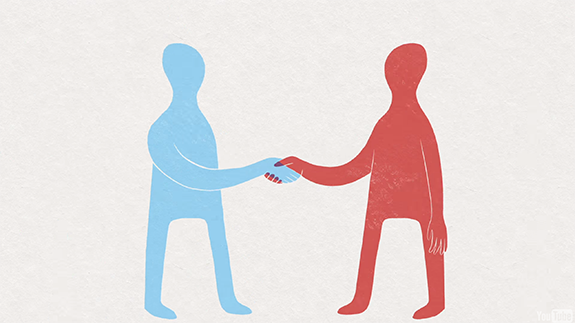
Lisa, How did you end up coming up with this specific style for the lesson?
LL: I knew I wanted to work with two distinct colors to represent left and right, and I wanted to try an animation style that mimicked printmaking methods. Initially, I planned to work in black & white but kept running into logistical problems with the idea. As I storyboarded the lesson, I worked with Col-erase pencils that animators usually use to sketch – the most common colors being blue & red. I began to like the look, and the idea of overlapping the two colors to introduce a third color, like in linoleum printmaking, and then realized that the colors actually matched the red and cyan used in anaglyph 3D glasses! At that point, I was sold on my accidental color choices.
I also had the great opportunity to collaborate with two brilliant artists. I was stoked that I was able to bring on Krystal Downs as an animator. Years ago, I worked with Krystal at the School of Visual Arts when she was a student there, and it is beyond exciting to be able to see the evolution of an artist from a student into a professional. She was a blast to work with and created some truly beautiful animation for this lesson.
When making an animated film, there is a point where you cannot see what you are making any more. You’ve watched every frame so many times, and so carefully, that all you see is a to-do list. And then, the magical moment happens when the sound designer sends you a soundtrack, and suddenly you are watching a film. I love the moment when you finally see your own work come together coherently, and after Michael Dow (a lefty!) delivered a first draft of the sound and music to me, I literally watched the lesson four times in a row because I was so excited that what I had been working on for two months actually made sense!
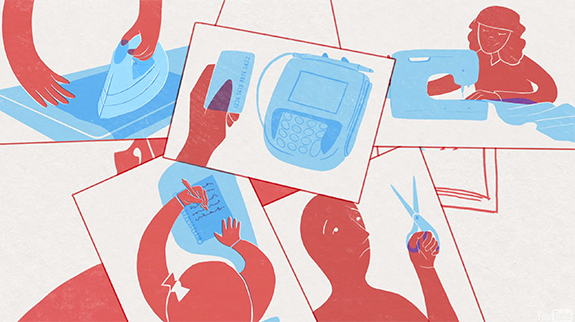
Any closing thoughts?
DA: I’m amazed by the great work of the team at TED-Ed, and I’m exciting to keep watching their future videos. I also want to be sure that my co-author and ex-student Mark Panaggio (now a professor at Rose Hulman Institute of Technology) gets much-deserved credit for his big contribution to our model.
LL: Well, among the responses to the lesson and the community post, I’ve noticed that people are asking, “So, what’s the deal with ambidexterity?” Perhaps we need to make a sequel?
Check out the full TED-Ed Lesson here. »
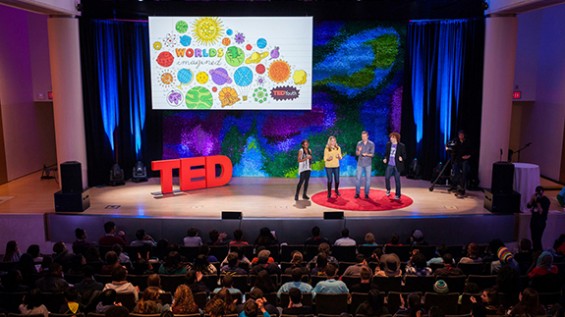
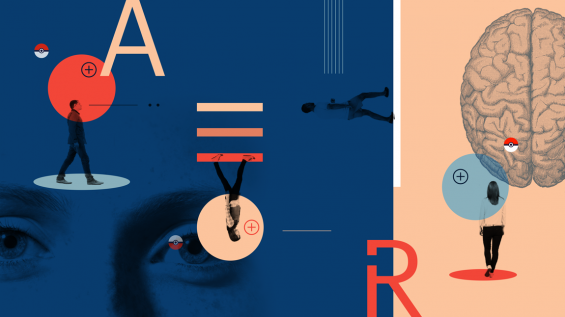


What about ambidextrous people?
This is awesome! I can somehow relate to this although most of my friends would still consider me peculiar because I can only use my left hand in comfortably writing on a paper or notebook. If it’s on a whiteboard (or anything that is placed on a wall), I’m comfortable in using my right hand.
I would use my right hand for sports as I used to be a badminton varsity player at school and would also use it for most of my day to day tasks like cleaning, ironing clothes, eating etc.
Should I consider myself left-handed, right-handed or some sort of an inbetweener?
As the only lefty in a right-handed family, I found this very interesting. I remember when I was going to take the ACT many years ago. My father, a professor, knew that the room had tiny right-handed tables on the chairs. He made special arrangements so ?I would have a lefty one. When I got there, no one cared and my left arm had to stay in the air for the duration of the test. These things do not even dawn on righties.
Old 8mm movies show me as a toddler being handed things in my right hand and moving them to my left. My parents did not figure it out until much later!
A question: do we know if cultures with a reading-writing system going from bottom to top, and right to left, such as Arabic and Chinese, show a higher per cent of left-handers? This pattern of writing avoids the blurring problem encountered by left-handed writers of English, French, Spanish caused by dragging our hand over freshly-written text, smudging as we go. And perhaps it is more natural for us, too: When my dad taught me to write my name at age four, I wrote “yraM,” gaining a new nickname, “Yuh-Ram.”
Writing and bowling and sometimes painting are about my only left-handed activities; would be very interested to see a follow-up article on ambidextrousness.